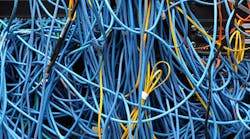Managing Complexities and Challenges of IIoT
Major technological advancements such as big data, mobile and cloud are revolutionizing the way we live and do business. They are leading us into a new era where the devices we use are not only getting smaller, but smarter — connecting more easily with every aspect of our lives. This new reality, the Internet of Things (IoT), is changing the way consumers live their lives, turning business models upside-down and completely revolutionizing the way we manage large infrastructures today.
When it comes to the manufacturing industry specifically, IoT is poised to make a tectonic shift in the industry. As manufacturing remains one of the larger economic drivers across the globe, one can anticipate that IoT is set to disrupt this important, interconnected global market.
The Industrial Internet of Things
Even before the proliferation of IoT, industrial processes created massive quantities of data. As IoT technologies become more prevalent and interconnected devices become more networked, there will be an explosion of data at the device level. This data will enable new business models, completely transforming the manufacturing playing field.
In the era of the IoT, manufacturers have the capability to track every aspect of a business, from managing manufacturing processes, suppliers and inventory, all the way down to field service staff. When fully leveraged, IoT can mean better inventory management, pulled production instead of pushed production, accurate activity-based costing, automatic adjusted logistics that adapt to changes in the manufacturing layer and productivity increases.
By making devices Internet-enabled, data and information from processes becomes more accessible than it was before. This essentially drives industrial manufacturing processes to become connected and networked through the sharing of data, leading to lower costs, more optimized processes and the ability to make better and faster decisions in real time.
The benefits of IoT for manufacturers are boundless. However, with every new technological advancement comes a new set of challenges and complexities that need to be managed, and the Industrial Internet of Things (IIoT) is no different.
More Devices, More Complexities: Managing the Challenges of IoT
Handling the enormous quantities from industrial processes can be a daunting and difficult task. And with the additional data produced by the IoT, the biggest challenge for manufacturers will be figuring out how to harness that data, add context to it and turn it into actionable insights in real-time. Transforming data into valuable information is no small feat. The variables and challenges are real and, in some cases, new to many operations.
Further compounding the complexities of the IoT, part of the data you need is hosted at the enterprise-level and part is at the control level. This division of data creates a bottleneck, making it difficult for manufacturers to have a clear picture of their data.
Seizing the Opportunity: Optimizing Operations to Reap the Benefits of IoT
For manufacturers looking to add IoT technologies to their operations, there are a few key considerations to take to reap the full benefits. They include:
- Automate, automate, automate again: Thankfully, the technologies already exist to automate processes and allow manufacturers to make smarter decisions about their operations. Automation, enabled by IoT and big data are providing faster and far more effective processes, delivering a higher value and faster time to market. For example, substantial improvements in functionality of industrial control systems are creating a clear path toward improving production performance. Automation networks can use data to self-configure, self-regulate and suggest efficiency improvements. Automation enables decisions an operator currently makes to be made by the machine, freeing the operator to focus on improving the efficiency of the system and addressing challenges like energy usage, security, safety and process tuning.
- Remove IoT bottlenecks to create context: One of the biggest challenges with IoT is the massive explosion of data created at the device level. Adding to that challenge, there’s a bottleneck between the enterprise-level data and the data at the control level. In order to gain full visibility into the data available, it’s imperative manufacturers remove the bottleneck to acquire a holistic picture of their available data. This allows businesses to analyze data, add context from the entire operation and extract its business value.
- Embrace Digital: As an industry, we’re just beginning to scratch the surface of the digitization and big data software components that will help mitigate the complexity of IoT. Technologies such as monitoring software, cloud and virtualization tools help manufacturers use data to improve operations. (The newest software suites add a level of analytics to integrate systems together, providing a bird’s-eye view into customer operation to find opportunities to improve performance and create more efficiency. (This also enables new applications like predictive maintenance tools, which capitalize on information from different machines and points within the operation to minimize downtime and increase productivity.)
Interconnected factories, plants and manufacturers are more efficient, productive and smarter than their non-connected counterparts. By leveraging automation, mending bottlenecks at the enterprise and control levels, and adding context to data in order to turn it into action, manufacturers will be equipped with the resources they need to leverage IoT and improve their business processes. By unraveling the complexity of IoT, manufacturers can continue to innovate and stay relevant in the next industrial revolution.




